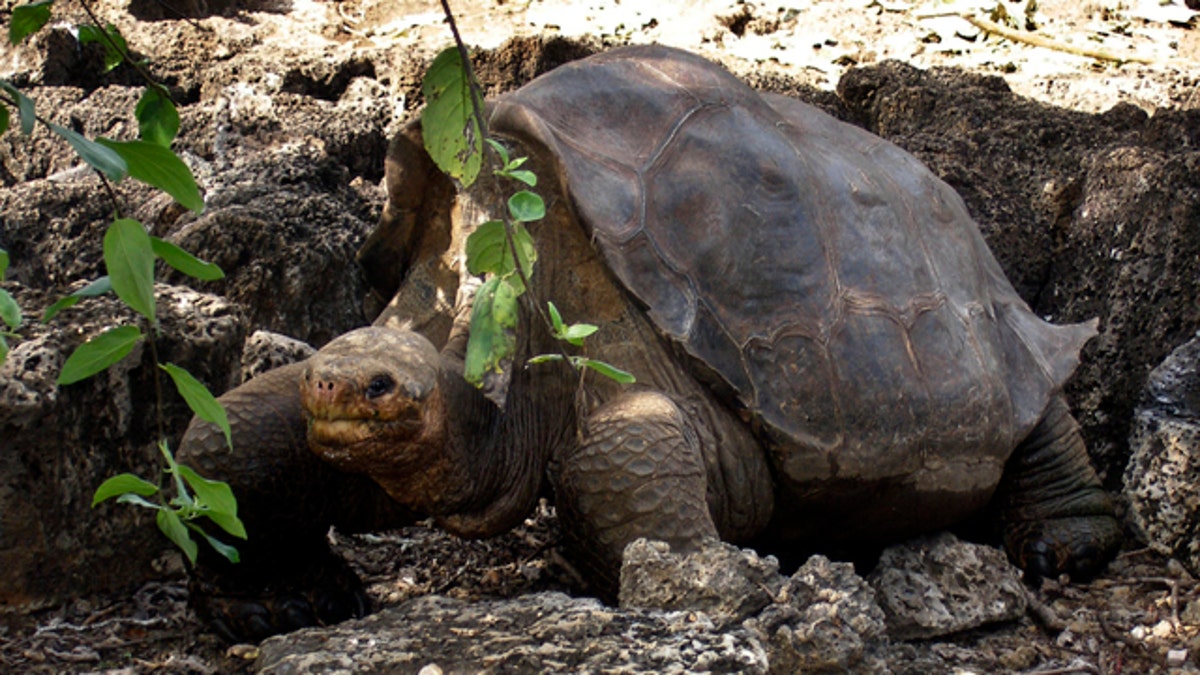
July 21, 2008: A giant tortoise named "Lonesome George" is seen in the Galapagos islands, an archipelago off Ecuador's Pacific coast. (AP2008)
QUITO, Ecuador – The giant tortoise Lonesome George, whose failed efforts to produce offspring made him a symbol of disappearing species, was found dead on Sunday, officials at the Galapagos National Park announced.
Lonesome George was believed to be the last living member of the Pinta island subspecies and had become an ambassador of sorts for the islands off Ecuador's coast whose unique flora and fauna helped inspire Charles Darwin's ideas on evolution.
The tortoise's age was not known but scientists believed he was about 100, not especially old for giant tortoises, who can live well over a century. Scientists had expected him to live another few decades at least.
Various mates had been provided for Lonesome George after he was found in 1972 in what proved unsuccessful attempts to keep his subspecies alive.
He lived at a tortoise breeding center on the archipelago's island of Santa Cruz. He was found Sunday morning in his pen by his longtime keeper, Fausto Llerena, the park said in a statement.
Attempts were initially made to mate Lonesome George with two female tortoises from Wolf Volcano. But the eggs they produced were infertile.
Two females from Spanish island's tortoise population, the species most closely related to Pinta tortoises, were placed with him last year.
The park said the cause of his death would be investigated.
The Galapagos' giant tortoise population was decimated after the arrival of humans but a recovery program run by the park and the Charles Darwin Foundation has increased the overall population from 3,000 in 1974 to 20,000 today.